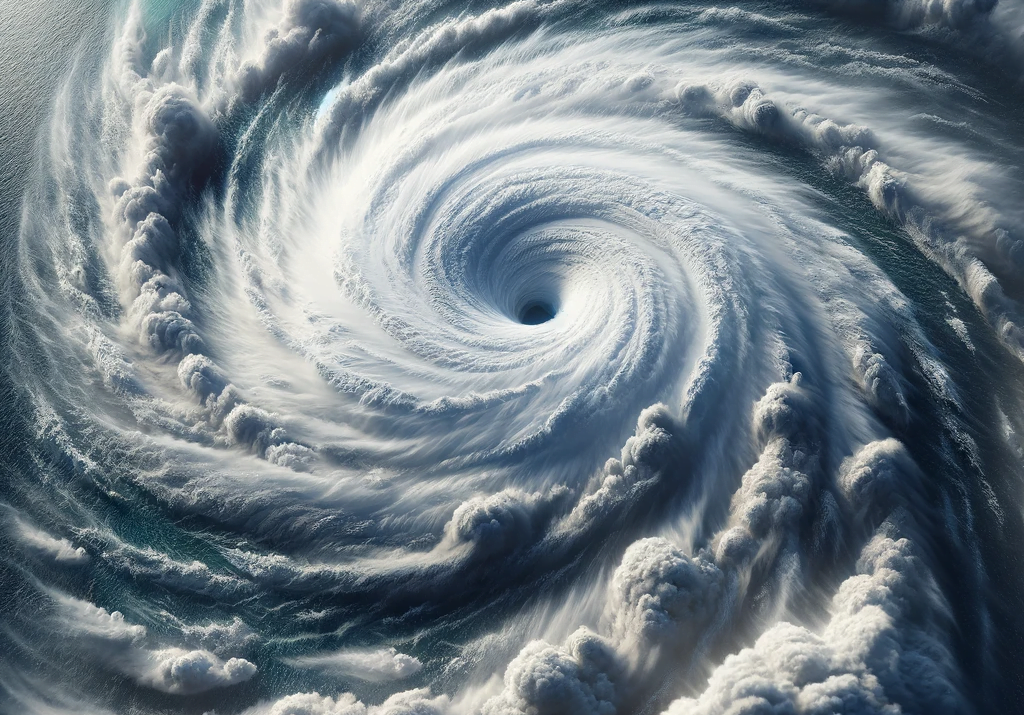Welcome to the dynamic and often daunting world of tropical cyclones. These natural phenomena are not only fascinating from a meteorological standpoint but also critical for us to understand due to their profound impact on human lives and environments. In this comprehensive guide, we’ll unravel the mysteries of tropical cyclones, their formation, characteristics, and the different terminologies used to describe them. We’ll also explore their effects, including the comparison with tsunamis, and delve into how they’re named and classified.
What is a Tropical Cyclone?
A tropical cyclone is an intense circular storm that originates over warm tropical oceans and is characterized by low atmospheric pressure, high winds, and heavy rain. It’s a generic term used globally to describe this weather phenomenon, which takes on different names in different regions.
Cyclone vs Hurricane: Understanding the Differences
Though similar in nature, cyclones and hurricanes differ mainly in their location. Hurricanes occur in the North Atlantic and northeastern Pacific, while cyclones occur in the South Pacific and Indian Ocean. Both are tropical cyclones, but regional nomenclature distinguishes them.
How is a Tropical Cyclone Formed?
Tropical cyclones form over warm ocean waters, requiring specific conditions: warm sea surface temperatures, high humidity in the mid-troposphere, low wind shear, and a pre-existing disturbance. The energy from the warm water fuels the cyclone, leading to its growth and intensification.
5 Causes of Tropical Cyclones
- Warm Ocean Waters: Provide the necessary heat and moisture.
- High Humidity: Essential for cloud and thunderstorm development.
- Low Wind Shear: Allows the storm to grow vertically.
- Pre-existing Disturbance: A necessary trigger for cyclone formation.
- Distance from the Equator: Coriolis force aids in rotation.
3 Main Characteristics of a Tropical Cyclone
- Low-pressure Center (Eye): A calm and clear area.
- High Winds: Spiraling inward and upward at high speeds.
- Heavy Rainfall: Resulting from the intense cloud and thunderstorm activity.
10 Effects of Cyclones
- Wind Damage: Can devastate buildings and infrastructure.
- Coastal Flooding: Due to storm surges.
- Erosion: Affecting landscapes and habitats.
- Infrastructure Destruction: Roads, bridges, and utilities.
- Loss of Lives: One of the most tragic consequences.
- Power Outages: Affecting large areas.
- Water Supply Disruption: Impacting communities.
- Agricultural Losses: Affecting food supply and economy.
- Economic Impacts: Huge costs in damages and recovery.
- Environmental Damage: Long-term ecological impacts.
Is a Cyclone a Disaster?
Yes, cyclones are classified as natural disasters due to their large-scale destructive capabilities, affecting millions of lives and causing substantial damage to property and the environment.
Size Comparison: Cyclone vs Hurricane
The size of cyclones and hurricanes can vary greatly, and there’s no definitive answer as to which is larger. However, some of the largest tropical cyclones have been recorded in the western Pacific.
What is a Category 4 Hurricane?
A Category 4 hurricane is a severe storm with winds between 130-156 mph, capable of causing catastrophic damage to structures, uprooting most trees, and significantly disrupting communities.
4 Types of Cyclones
- Tropical Cyclones: Warm-core systems forming over tropical waters.
- Subtropical Cyclones: Hybrid systems with features of tropical and extratropical cyclones.
- Extratropical Cyclones: Cold-core systems occurring in higher latitudes.
- Mesocyclones: Smaller, spinning features within thunderstorms.
Tsunami and Cyclone: Different Phenomena
Tsunamis and cyclones are entirely different phenomena. A tsunami is a series of sea waves caused by underwater disturbances like earthquakes, while cyclones are atmospheric disturbances.
How are Cyclones Named?
Cyclone names are predetermined by international meteorological organizations to facilitate clear communication. They are usually short, distinctive, and culturally relevant to the regions they affect.
What is a Category 3 Cyclone?
A Category 3 cyclone features winds of 111-129 mph, causing significant damage to infrastructure, uprooting trees, and potentially leading to loss of life and property.
The Strongest Cyclone in the World
One of the most powerful cyclones recorded was Typhoon Tip in 1979, with the lowest sea-level pressure ever observed in a tropical cyclone.
Tsunami Facts
- 2004 Tsunami: Over 230,000 deaths.
- Tsunami Word Origin: Japanese, meaning ‘harbor wave’.
- Tsunami for Kids: Giant waves caused by underwater disturbances.
- Recent Major Tsunami: The 2011 Japan tsunami.
- 11 Tsunami Facts: Include aspects like speed, height, impact areas, and safety measures.
What is a Category 5 Cyclone?
A Category 5 cyclone is the most intense on the scale, with winds exceeding 156 mph, causing catastrophic damage and posing extreme danger to life and property.
Two Types of Cyclones
- Tropical Cyclones: Form in tropical regions with warm ocean water.
- Extratropical Cyclones: Form in temperate zones and involve air masses of different temperatures.
Cyclones in Class 9 Geography
In educational curriculums, cyclones are studied for their formation, characteristics, effects, and impacts on human and natural systems.
Conclusion
Tropical cyclones, with their immense power and potential for destruction, remind us of nature’s unpredictable force. Understanding these storms is not just a matter of scientific interest but a necessity for preparedness and resilience. As we continue to observe and study these natural phenomena, our growing knowledge equips us to better predict, prepare for, and respond to these incredible forces of nature, thereby safeguarding our communities and preserving our environments.






